 |
Loadin
|
 |
 |
Loadin
|
 |
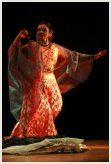 |
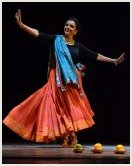 |
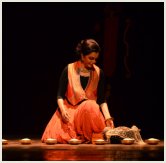 |
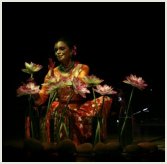 |
 |
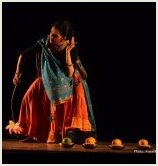 |
|
Home
| Synopsis
| Credits
| Calendar of Performances | Critics Speak | Response | Photo Gallery
a million SITA-s - Response a Neo Bharatam presentation Response - students' feedback to the performance on May 3, 2015 at the NYU Steinhardt School, Greenwich Village Storytelling in the Classroom, Spring 2015 - Meggie Smith It was a distinct pleasure to view the storytelling by Anita Ratnam at Provincetown Playhouse. As a dancer who briefly studied Bharatanatyam in my undergrad and in my years here in New York, I came to this performance with a certain amount of understanding of the inherent connection between story telling and this specific dance form. Remembering a wonderful storytelling my professor had shared while we were in school – dynamically physicalizing his words with crisp and expressive mudras (hand gestures) – I was curious to see how Anita would blend this dance form with the traditional art of storytelling as we studied it in our course this semester. This was a very ambitious show incorporating props, recorded music, live singers, jewelry and costume changes, talking, instruments, live music, and dancing. The first element that I noticed was Anita’s choice to work in a more upright (pedestrian) body position. Many of East Indian styles incorporate deep bends of the legs, an angular triad of shifted weight in the hips, torso, and head positions with Bharatanatyam being, in my experience, especially grounded, rhythmic, and angular. I found her more fluid style (going from extreme formalized movement, through the natural body of the human storyteller – talking to the audience and responding to them) allowed her to create a show that had so much complexity, both in story and presentation. In researching Anita a bit more through her website (http://www.arangham.com/anita/performr.html), her approach to the performance became clearer. Blending several movement styles and with this idea of striving for more freedom and circular motion, she stated “I have learnt that the expressions of the body are infinite and we need to unlearn some of our training in order to open ourselves up to the entire vocabulary available to us as dancers. In doing so we will not be unfaithful to our source for in tradition is the basis of our cultural DNA and then we can begin to become world citizens in the increasingly exciting world of art." Some of the moments that resonated with me the most were the ones where she took a single element (ex. green glove) and allowed that to identify and transition her from one style of movement to the next. Having the one prop that abstractly identified a character, allowed me as an audience member to not only have access to follow her into the story, but it let me fill in the gaps with my own story and imagination, while carrying me to the essence of the story – the specific frame in the storyboard. At times the multiple props became overwhelming – taking it more into the theatrical element of “acting something out” versus storytelling where I feel there is more space for the listener to be part of the creation. In those moments, I felt like I was missing details and was not given the same permission to trust what I was taking from it. Another element that was very helpful in following the story and the names that are less familiar to those of us in the audience who do not know the language was her use of the masks of the two men – the two characters who became the visual constants, while the women moved around between and behind these men. Her desire to incorporate her personal vocabularies and movement knowledge, allowed her to uniquely present an epic story that has been told, and retold, for centuries. Her focus on the female characters was a refreshing way to view the story of Sita and Rama – offering a through line. I realized again in listening to these stories, that the storyteller’s cultural context still informs and embeds itself into their focus and perspective – specifically in her choice to focus on the women. Not understanding the role of women in that culture in an experiential way, however, I believe that I missed some of the subtlety that the East Indian audience members would have noticed. Often the women were still making choices to place the men and their legacy above themselves no matter what, and I would have appreciated a brief insight (lecture demonstration, article, or discussion) on what the traditional role of the women is, and if/how the women in the story were going towards or against that. Perhaps simply acknowledging their story as a story worth telling is a big stance to take. For me to fully know the meaning and purpose behind her choices as a performer – and her artistic expression – I felt I needed a better understanding of her social and cultural environment. Overall, this was a thrilling experience and a story I was so happy to have engaged with in this way. I look forward to following the next storytelling series and can’t wait to engage these new approaches into my classroom. Home | Contact |
About Arangham | About Anita Ratnam |
Events | Archive of events | Calendar of events
| On Tour | Press
|
Articles | Lectures | Publications | Active Repertoire | Festivals | Conferences | Rituals & Revivals | Workshops | Art & Activism |